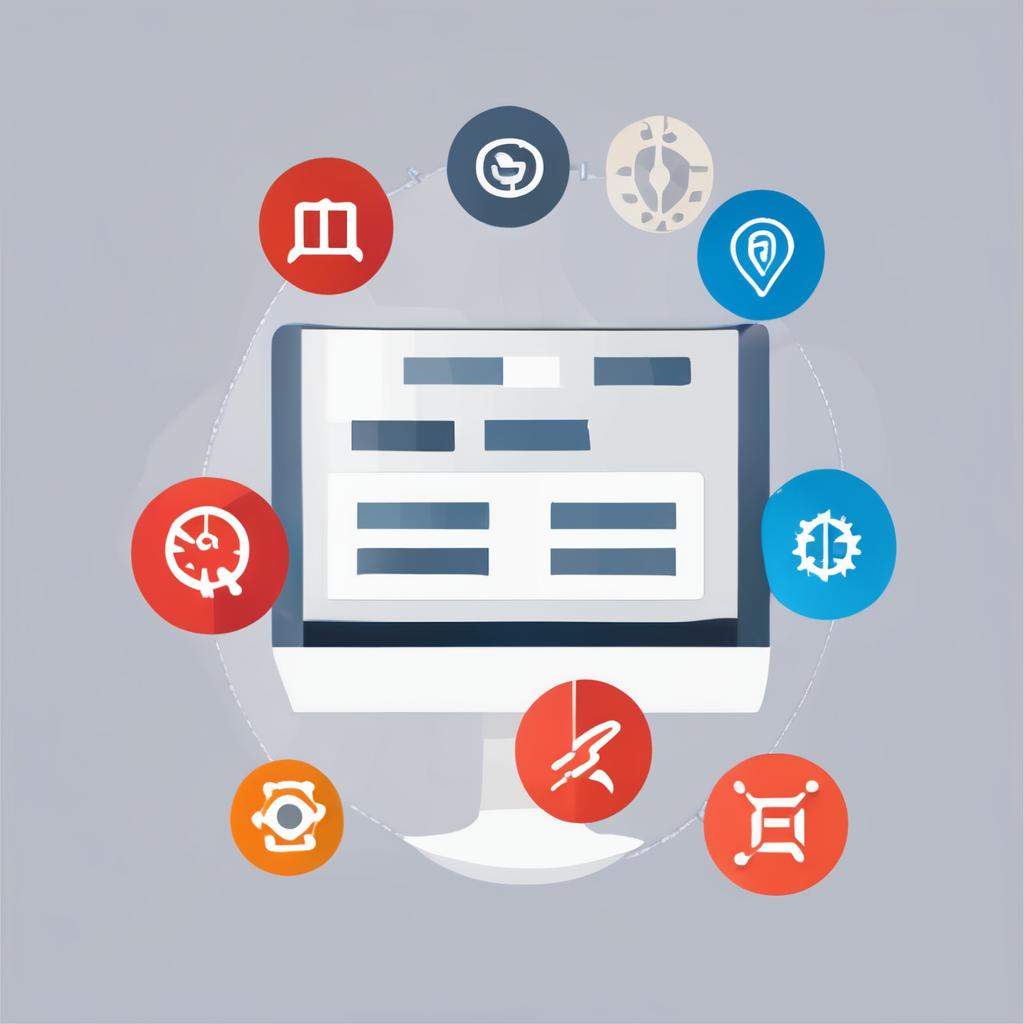Understanding the Risks of Wearable Health Devices
Wearable health devices offer remarkable benefits, yet they also pose serious privacy risks. These risks often stem from the potential for data breaches, where sensitive health information can be exposed or misused. For example, instances have occurred where wearable technologies have been compromised, revealing users’ medical conditions and daily activities.
Poor health data security practices can lead to unauthorized access to personal health information, which can be exploited for identity theft or used by unauthorized third parties. This often happens when the wearable device transmits data without adequate encryption or fails to securely store the health records it collects.
Also to read : Boost your productivity with an AI personal assistant today
The implications for personal privacy are significant. Insecure health data may result in privacy violations that could affect one’s professional life and personal relationships if such data gets into the wrong hands. It is crucial for users and manufacturers to recognize these threats and adopt measures to enhance data security. Employing robust encryption and ensuring consistent security updates are fundamental steps in protecting health data within wearable technology. Understanding these risks empowers users to make informed decisions about their use of wearable health devices and the protection of their data.
Best Practices for Managing Privacy Settings
Wearable health devices have revolutionized personal healthcare, but users need to manage their privacy settings attentively to safeguard their data. Start by meticulously configuring the privacy settings on your device to restrict unnecessary data sharing. Manufacturers typically provide guides that walk you through device configuration; it’s important to follow these steps carefully.
Also to read : Unlocking sustainable innovation with plm software
Regularly reviewing and updating your privacy preferences ensures you maintain control over your personal information. Manufacturers often release updates that may alter previous settings, so it’s crucial to periodically check these configurations. This practice is vital in managing the user control over what information your device collects and transmits.
Moreover, to mitigate privacy risks, it’s essential to limit data sharing with third-party applications. Many devices offer settings that allow you to decide which third-party apps can access your data, empowering you with greater control. Frequently reassessing these permissions can significantly reduce the likelihood of data breaches.
Finally, familiarize yourself with the privacy policies of apps and devices you connect to. Understanding how they handle your data strengthens your ability to make informed choices about your health information. By taking these actions, you actively participate in safeguarding your data.
Importance of Encryption and Data Security Measures
Ensuring data encryption is vital for the protection of personal information gathered by wearable health devices. Encryption converts data into a code to prevent unauthorized access, acting as a deterrent against potential data breaches. If a device transmits health data, such as heart rate or physical activity, without encryption, this data can be vulnerable to interception during transmission. Opting for devices that guarantee secure data practices adds a layer of protection.
Secure transmission between devices and applications is ensured using protocols such as SSL/TLS. These protocols secure communication channels, minimizing risks of ISPs or third parties intercepting data. For users, this involves verifying that their devices employ these protective measures during their device configuration phase.
To bolster information protection, consider these security measures:
- Regularly update device firmware to patch known vulnerabilities.
- Utilize devices and applications with strong reputations for health data security.
- Enable multi-factor authentication where available.
Consumers bear responsibility for understanding how encryption manifests in protecting their data. Through informed device selection and constant vigilance, users can meaningfully contribute to securing their health information while enjoying the benefits of wearable technology.
Selecting Reputable Wearable Health Devices
In choosing a wearable health device, the reputation of a brand plays a crucial role in ensuring the security and privacy of your data. Begin by researching brand trustworthiness, assessing factors like consumer reviews and ratings. These insights can provide valuable information about users’ experiences with the devices, revealing recurring issues or standout features.
When evaluating a device’s reputation, consider whether it holds trustworthy certifications or has partnered with reputable organisations. Certifications can serve as benchmarks of quality and security, indicating a commitment to protecting consumer data. Partnerships with well-known entities may enhance a brand’s credibility in producing secure, reliable health devices.
Don’t overlook independent reviews and consumer ratings on platforms that feature verified feedback, as these offer unbiased perspectives. They allow potential buyers to gauge user satisfaction, common complaints, and the device’s overall performance from actual users.
Ultimately, recognising the significance of a brand’s standing, backed by trustworthy certifications and positive consumer reviews, helps you make an informed decision. Choosing a device from a trusted brand ensures enhanced security and reliability while maximising the benefits of wearable health technology.
Understanding Data-Sharing Policies
Navigating the labyrinth of data-sharing policies associated with wearable technology is critical for maintaining personal privacy. Companies often implement complex user agreements that outline how they handle and share your data. However, these documents can be lengthy and laden with jargon, making it crucial to carefully read and comprehend their terms. Understanding these agreements empowers users to identify potential privacy invasions and evaluate to what extent their information might be shared.
Transparency is paramount in data-sharing practices. Users should expect clear disclosures about which third parties might access their data and for what purpose. A proactive strategy involves seeking devices and services that prioritise transparent data-sharing policies. Opting for brands that promote privacy by default and maintain a strong stance on transparency can significantly reduce risks.
Negotiating terms related to data privacy isn’t a privilege reserved for corporate contracts. Individuals can reach out to service providers to seek clarifications or propose modifications to unacceptable terms. By challenging ambiguous data policies, users can assert greater control over their personal information. Emphasising transparency in data-sharing practices establishes a foundation for users to confidently engage with wearable technology.
Monitoring and Managing Shared Health Data
The management of shared health data is a critical aspect of maintaining privacy in wearable technology. Regular data monitoring is essential, as it allows users to track what health information is being shared and with whom. By keeping a close eye on shared data, users can ensure they remain in control of their personal information.
Conducting personal privacy audits of wearable devices is a proactive measure that helps identify potential vulnerabilities. These audits involve reviewing device settings, permissions, and app connections to ensure that only necessary data is being shared. Regular audits can uncover unfamiliar or unauthorized data access, allowing users to address security concerns promptly.
Several tools and applications are available to aid in health information management. These resources offer features such as data comparison, permission tracking, and alert systems for unauthorized access attempts. Utilizing these tools enhances users’ ability to manage health records efficiently and securely.
To maintain optimal data security, users should consistently evaluate their sharing habits and employ available technological aids to keep their health information secure. This ongoing vigilance empowers individuals to protect their privacy while benefiting from the advantages of wearable health technology.
The Role of Software Updates in Cybersecurity
With the rapid evolution of wearable health devices, keeping up with software updates is essential for maintaining robust cybersecurity practices. These updates enhance device resilience against new vulnerabilities and threats. Regular updates ensure that any security holes discovered are patched timely, reducing the likelihood of data breaches.
Device maintenance through updates not only improves security but also often adds new features or enhances existing functionalities. Many manufacturers provide regular updates addressing both security and performance. This practice ensures your device benefits from the latest advancements, maintaining its efficacy and protection levels.
To ensure timely updates, activate automatic update settings where possible. This feature eliminates the need for manual checks and installs essential security patches as they become available. For devices lacking this feature, setting reminders to check for updates manually is recommended.
It’s important to comply with alerts or notifications from manufacturers, as these often indicate crucial security fixes or compatibility upgrades. By maintaining updated software, users play a proactive role in optimizing their device’s security infrastructure, ensuring their personal information remains safeguarded against evolving cyber threats.
Educating Yourself on Emerging Threats
In the ever-evolving landscape of wearable technology, staying informed about emerging cyber threats is crucial. These threats can target the sensitive health data collected by these devices, leading to potential privacy violations. One common threat involves malware targeting wearable devices to extract or manipulate personal information. Being aware of these issues helps users take proactive steps in mitigating risks.
Awareness training and consistent educational resources play a pivotal role in risk mitigation. By utilizing available resources, such as cybersecurity courses or dedicated websites focusing on wearable tech threats, users can enhance their understanding of potential vulnerabilities. Engaging with online forums or user communities also provides insights into real-world experiences and best practices.
Moreover, continuous learning ensures that individuals adapt to new technological developments and adopt necessary precautions. This involves not only staying updated with the latest threats but also understanding emerging protective measures. Incorporating this knowledge into daily usage of wearable devices creates a secure environment for managing personal health information. Embracing a culture of awareness and vigilance is foundational in navigating the complexities of privacy risks associated with wearable technology.











